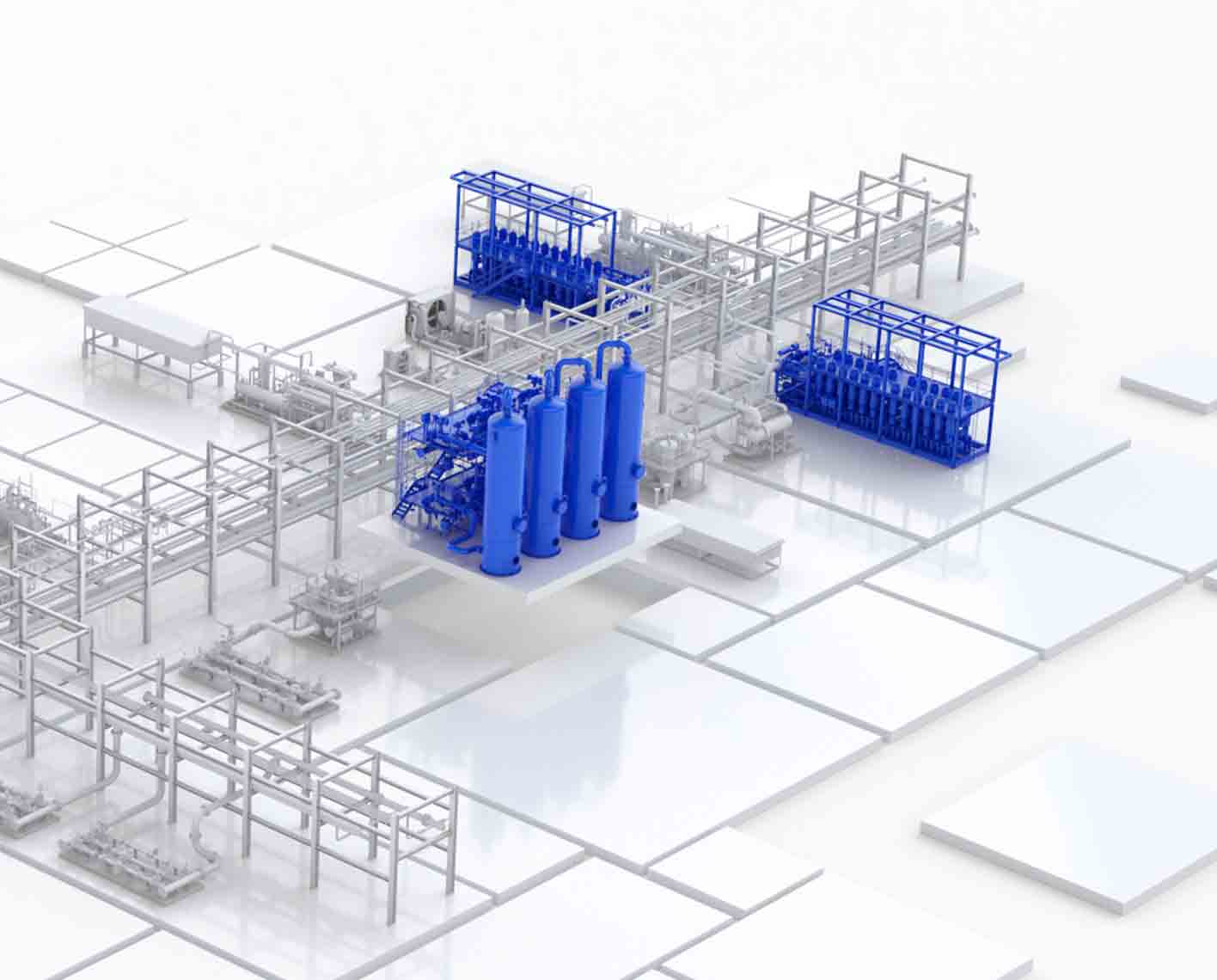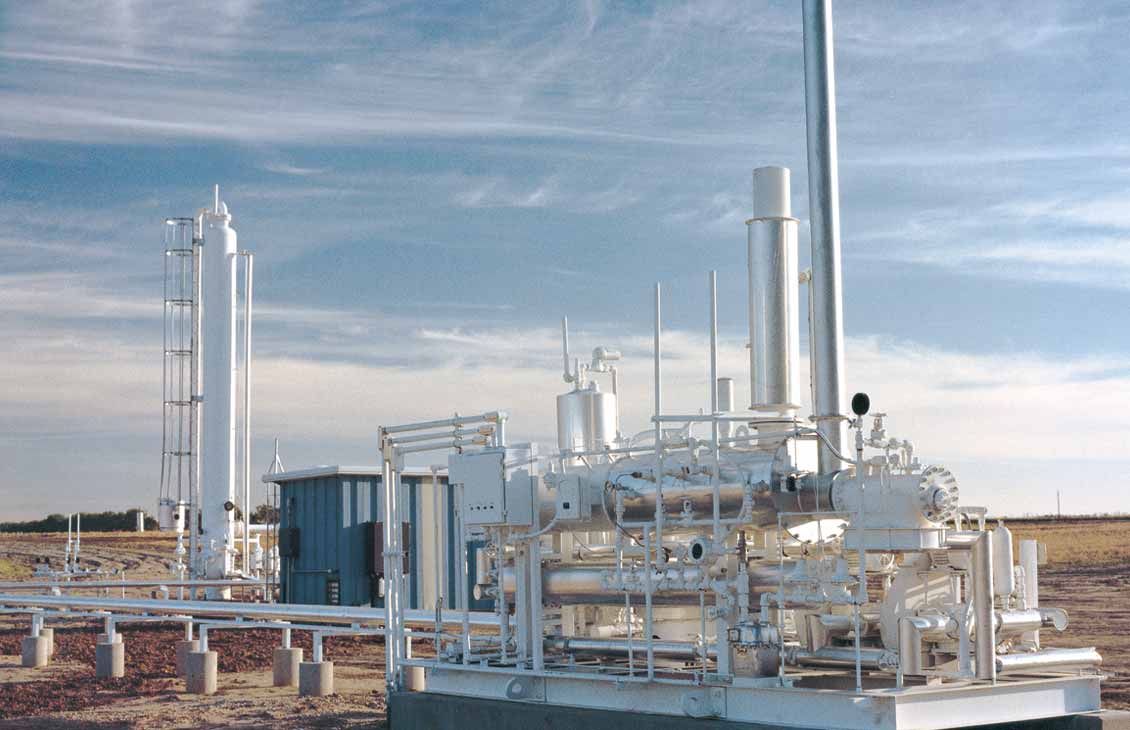CO2 dehydration
An essential component of carbon capture and sequestration

Standard or fully customized solutions to meet your project economics and performance parameters
Transportation of CO2 is a key area of focus in any CCS project. Aqueous amines are typically used to capture CO2, resulting in water-saturated gas. If not managed correctly, this wet CO2 can lead to corrosion and hydrate formation.
Identifying the appropriate CO2 treatment and dehydration level for transport and storage is therefore essential. In-depth understanding of the constraints and transport parameters enables defining fit-for-purpose pipeline specifications and identifying and implementing suitable technologies to treat the CO2.
SLB brings a holistic approach to the task, taking into account the full CCS value chain. Leveraging our extensive knowledge of gas treatment processes, industry-leading suite of technologies, partnerships with industry experts, and global experience onshore, offshore, and on FPSOs, we work with you to develop effective, scalable solutions that you can count on to meet your project requirements.
| Triethylene Glycol (TEG) |
Silica Gel | Molecular Sieve | |
| Capex | $ | $$ | $$ |
| Opex | $ | $$$ | $$$$ |
| Footprint | Small | Medium | Medium |
| Power consumption | Low | Medium | High |
| Typical outlet moisture specification, ppm | 100 | 30 | 1 |
Dehydration with TEG
- TEG is typically used for gaseous CO2 and delivers <100 ppm of water. Greater dehydration can be achieved via advanced designs and use of stripping gas.
- CO2 pressure drop is <0.4 bar.
- This option has the lowest capex and opex, typically 50%–80% the cost of desiccant systems.
- Ventless TEG technology can be incorporated to recover stripping gas and eliminate venting.
- Standard designs are available for TEG circulation rates of 10–50 galUS/min.
- Steam-, electric-, or hot oil–heated or gas-fired reboiler is available.
Learn more about our glycol dehydration systems.

Dehydration with silica gel
- Silica gel typically delivers <30 ppm of water and is suitable for gaseous and liquid CO2 systems.
- Pressure drop is <2.4 bar, or lower if regeneration gas compression is adopted.
- Silica gel desiccant is acid resistant and ideally suited for CO2 applications.
- No vent stream is generated, reducing direct emissions.
- Operation is automated and unattended.
- Standard designs are available for handling 0.25–5 metric tons of CO2/year.
Dehydration with molecular sieve
- Molecular sieves can achieve <1 ppm of water, suitable for ultradry applications.
- Pressure drop is <2.4 bar, or lower if regeneration gas compression is adopted.
- Acid-resistant molecular sieves are available.
- No vent stream is generated, reducing direct emissions.
- Operation is automated and unattended.
- Standard designs are available for handling 0.25–5 metric tons of CO2/year.
